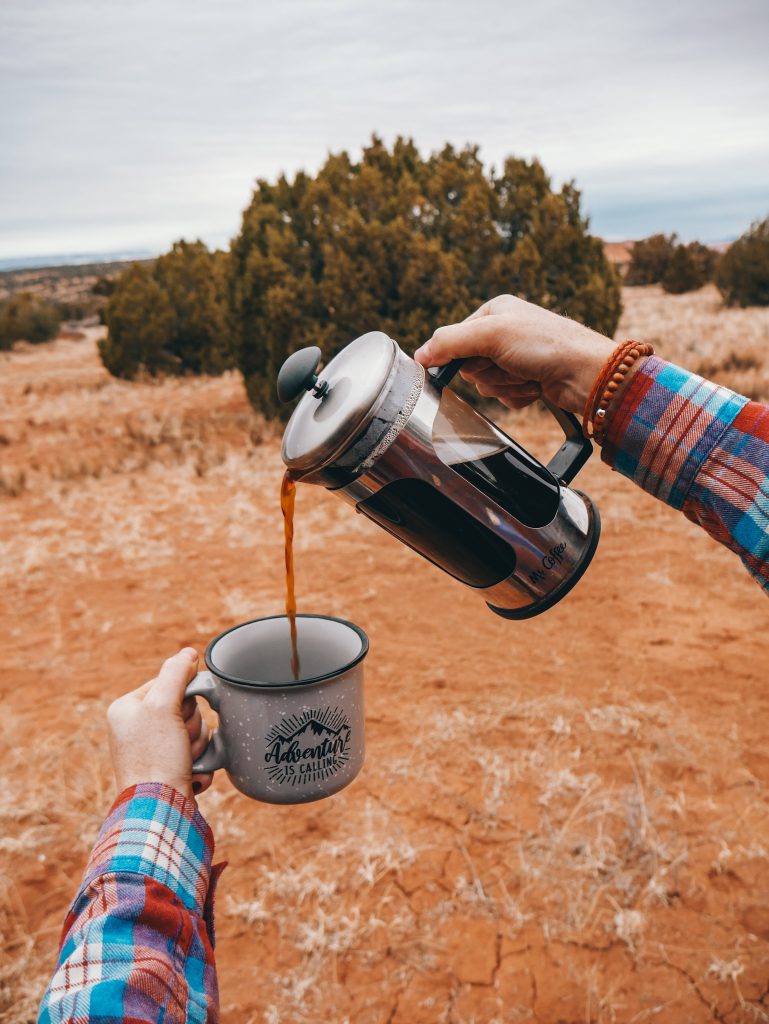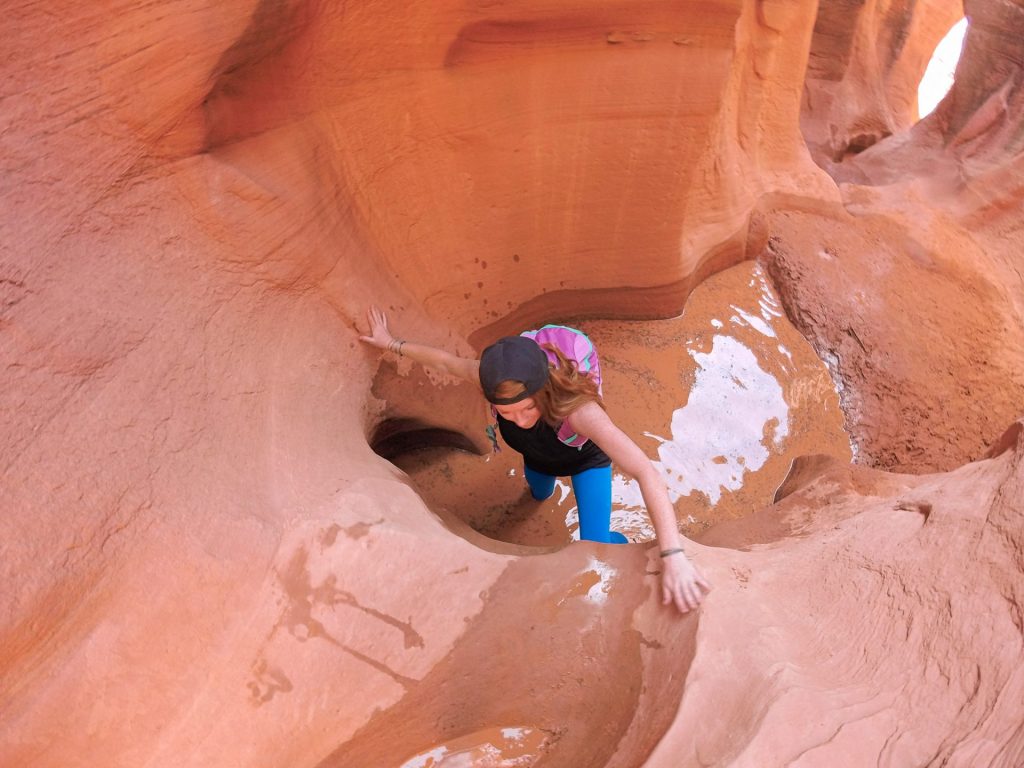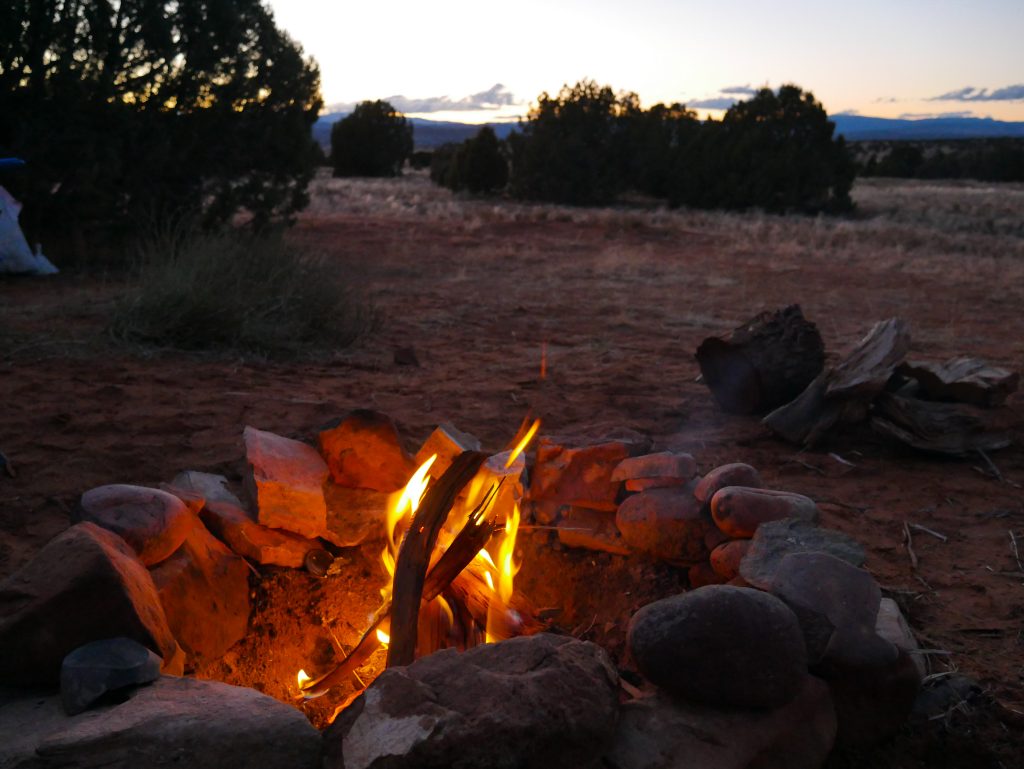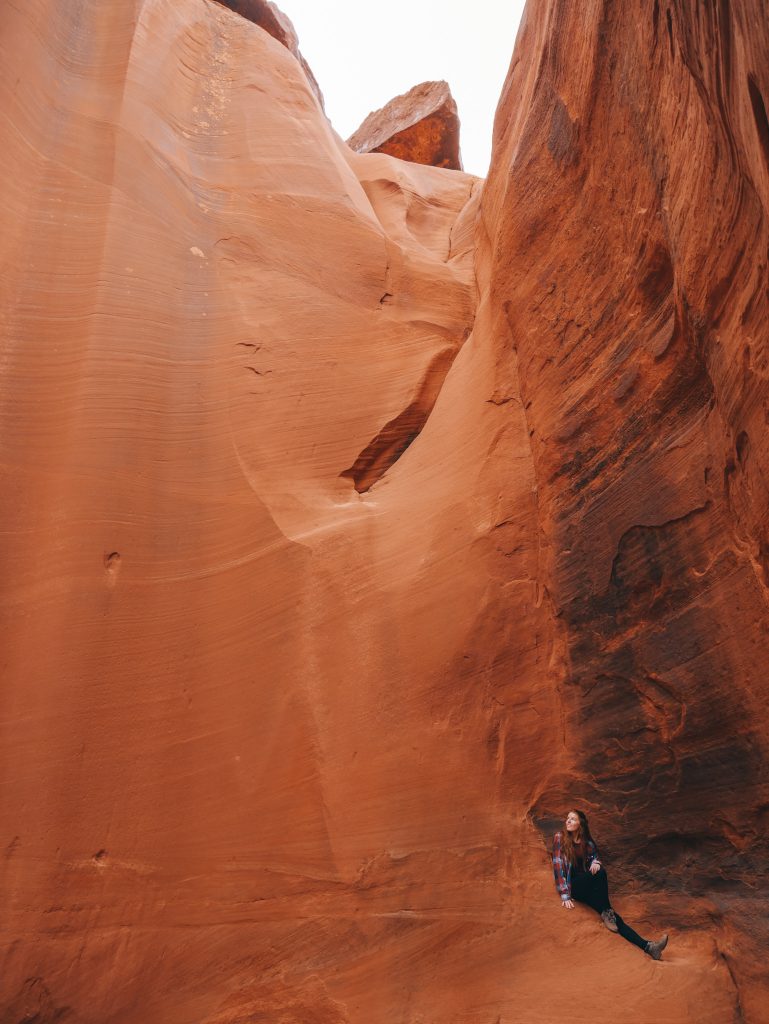Grand Staircase-Escalante National Monument is one of the most remarkable places we’ve camped, and the area is home to endless desert adventures. With many options to choose from, it’s pretty important to have an idea of what you want to do before you go and prepare for these excursions accordingly. Here are some tips to help you in planning a trip to Escalante and to have blast while you’re there.

One of the first helpful things to do is stop at the visitor’s center in the town of Escalante. There, you can pick up your free camping permit and ask for any maps and tips for exploring and camping in the area. If you visit during rainy times of the year and plan to camp down Hole-in-the-Rock Road or other backroads, be sure to ask about the road conditions, as they can get extremely muddy. Also, if you plan to be driving between trailheads over the following days, make sure you fill the tank with gas so you don’t end up stranded far from town.
Where to Pitch the Tent
Primitive Spots:
Backpacking is very common in the many canyons of Escalante. Some incredible spots that we have come across are near Neon Canyon along the Escalante River and throughout Coyote Gulch. If in a canyon, especially near the water, be sure that there are higher grounds nearby in case of heavy rain that could turn into a flash flood.

You don’t have to haul your stuff into the depths of a canyon to have a spot completely to yourself. Endless primitive campsites line Hole-in-the-Rock Road and its side roads, and you can find one with nobody in sight… except maybe the free-range cows. Although this is BLM land and you can camp pretty much anywhere, a best practice is to camp where you see an already established site (typically marked by a fire pit). Don’t forget to pack out all of your trash to leave the spot clean and ready for others to enjoy.
Our first time here, we turned right off Hole-in-the-Rock just past the Egypt turnoff and pitched our tent a ways down that road above a dry riverbed. We usually pick a spot in between all of the hikes we plan to do to minimize our driving time. Check out three great Escalante day hikes here.
We have also camped down towards Harris Wash. This area is a little more sheltered from the wind, but the road gets really tricky if it rains. Any dispersed or backcountry camping in Escalante requires a permit that you can get at the visitor’s center.

Campgrounds
If bumpy roads and primitive camping aren’t for you, the White House, Calf Creek, and Deer Creek campgrounds are options around the monument. There are also some campgrounds in nearby parks, including several in Bryce Canyon National Park or the couple Escalante Petrified Forest State Park.
We have never camped in an Escalante campground, so we aren’t the best people to ask on that topic. But, the visitor’s center can provide some great information on the cost and amenities that they provide.
Road Conditions
The Highway 12 Scenic Byway that runs through part of monument is paved. But, many of the side roads are not. Hole-in-the-Rock Road is a very well-maintained dirt road, but heavy rainfall can make this road a muddy nightmare. Especially in the spots where the runoff floods the low points in the road. The road may look great on a dry day, but people do get stuck down here when it rains!
The many camping and trailhead turnoffs along this road are not as well maintained and can be impassable after heavy rains. Even in dry conditions, some of the roads are bumpy and are better accessed in a high-clearance vehicle. Some trailheads, such as Dry Fork, have an alternate parking area for cars that may have trouble making it over rocks and potholes further down the road.

Additional Things to Bring
On top of the normal camping gear, there are some important things to bring when camping and hiking in Escalante. The weather and conditions in the desert can vary widely over the course of a day, so make sure you are prepared for all of the possibilities.

- Water: Lots of it. When you are car camping and hiking, bring at least a gallon per person per day. Water purification methods, such as pills or filters, are also useful when hiking long distances if you are near water. Along Hole-in-the-Rock Road, we have never seen much water; the only large sources we have seen lie in the canyons. Remember that there may be a lack of water sources in areas during the summer.
- Extra Layers: The night temperatures here can be quite cold, even in the summers. The temperature during the day in summer months is typically hot and dry, but can change quickly with any rain, wind, and clouds that pass over. Bring warmer layers and a rain jacket.
- Water shoes: You may encounter water on various hikes. Bring water shoes, like Chacos or Tevas, or extra pairs of socks and shoes for days that lead you through water crossings and muddy spots.

- Maps or GPS: Super helpful when you are in the middle of nowhere following a nonexistent trail. Escalante has many unmarked trails that often go over slickrock or through rivers, so they can be hard to follow. We followed directions to some of our destinations by GPS, which really came in handy. Service is limited, so be sure to download maps beforehand.
- First Aid Kit: A small first aid kit is smart to have when hiking. You may find yourself scrambling up steep rocks or encountering spiky cacti.
- Camera: Vibrant orange canyons, unique rock formations, colorful flowers, desert wildlife, and Milky Way night skies are all part of what makes this area a photographer’s paradise. It would be a bummer to not have a camera to capture it!
- Firewood: Because who doesn’t love sitting next to the campfire after a long day of adventure? Campers can build fires in certain areas, including along Hole-in-the-Rock Road, but they are not permitted in the canyons. Always check current fire restrictions before your visit. You can also buy firewood at the gas station in Escalante.

When to Go
You can visit Escalante year-round, but each season can vary a lot in terms of weather. It can snow in the winter and it can be over 90°F on summer days. So, when you choose to go depends on what you are up for.
We personally enjoy the springs here. They have gifted us with enjoyably warm and sunny days and cooler, but pleasant nights that didn’t leave us frozen head to toe. It rained on us a bit, but these storms typically blow over quickly. If you go during rainier parts of the year (spring and monsoon season at the end of the summer) and plan to hike canyons, be prepared to wade and know that flash floods may occur.
Escalante is generally a less popular destination than other surrounding hot spots in Utah. In the spring months, there were days where we didn’t see another soul in sight on our adventures. Even on the weekends, we haven’t seen many crowds.
No matter when you go, Escalante is a beautiful place to pitch your tent, and you are guaranteed to find some bad ass desert adventures!

Wildlife
Scorpions and snakes aren’t uncommon in the area. Just keep an eye out for them and avoid leaving shoes and bags where they can crawl in overnight. There are many other cool animals that call Escalante home, including a wide array of birds, coyotes, rabbits, foxes, tortoises, and more. Always respect their space and avoid feeding the wildlife.
Like this Post? Pin it!




